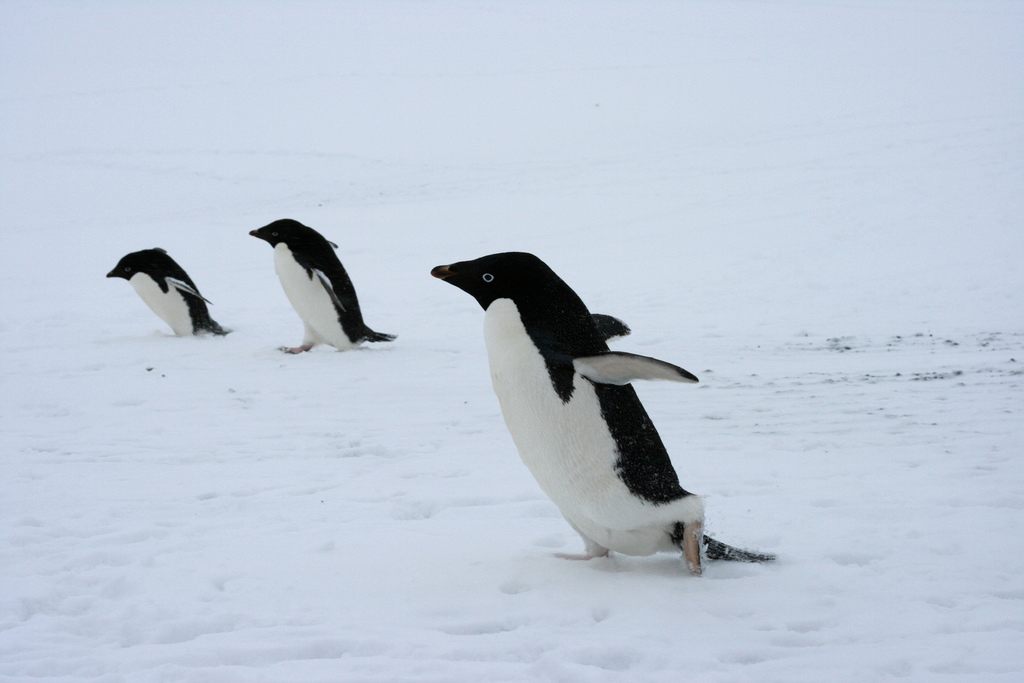Why 150,000 Penguins Missing From Antarctica May Actually Be Alive

Adélie penguins in Antarctica. (Photo: Eli Duke/Flickr)
Around 150,000 Adélie penguins were reported to have died earlier this month, after a giant iceberg rendered their colony landlocked, forcing the penguins to make a deadly 37-mile trek to find food.
Last week, however, an American scientist said that it’s possible, even likely, that the penguins migrated to another colony, and were alive and well.
Australian researchers had originally said that they observed the penguin population on Cape Denison plunging from around 160,000 to 10,000 since 2011, which they attributed to the iceberg, said to be roughly the size of Rhode Island.
They also estimated that the colony could be destroyed completely in 20 years.
But Michelle LaRue, a penguin researcher at the University of Minnesota, tells Live Science that it’s possible the penguins just relocated. A different penguin colony had previously been spotted thriving just five miles from the Cape Denison penguins.
“Just because there are a lot fewer birds observed doesn’t automatically mean the ones that were there before have perished,” LaRue said. “They easily could have moved elsewhere, which would make sense if nearby colonies are thriving.”
The Australian researchers had said that they had spotted penguin carcasses littering the ground at Cape Denison, but LaRue said that was common, since the frigid Antarctic weather meant that carcasses don’t decompose quickly.
“I do not know what happened to these birds, but no one does for certain,” LaRue said.















Follow us on Twitter to get the latest on the world's hidden wonders.
Like us on Facebook to get the latest on the world's hidden wonders.
Follow us on Twitter Like us on Facebook